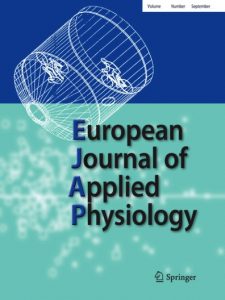Publications

Effect of applied cadence in repeated sprint cycling on muscle characteristics
Authors: Sebastian Klich 1, Kamil Michalik 2, Bogdan Pietraszewski 3, Ernst A. Hansen 4, Pascal Madeleine 5, Adam Kawczynski 6
Affiliations:
- Department of Paralympic Sport, Wroclaw University of Health and Sport Sciences, 51-612 Wroclaw, Poland
- Department of Human Motor Skills, Wroclaw University of Health and Sport Sciences, 51-612, Wroclaw, Poland
- Department of Biomechanics, Wroclaw University of Health and Sport Sciences, 51-612, Wroclaw, Poland
- Centre for Health and Rehabilitation, University College Absalon, 4200, Slagelse, Denmark
- Department of Health Science and Technology, Aalborg University, ExerciseTech, 9260, Gistrup, Denmark
- Department of Biomechanics and Sport Engineering, Gdansk University of Physical Education and Sport, 80-336, Gdansk, Poland
Journal: European Journal of Applied Physiology - January 2024, Volume 124, Pages 1609-1620 (DOI: 10.1007/s00421-023-05393-z)
-
Field & Applications:
- Sport
- Fatigue / Overtraining
- Muscle development / Performance
Purpose: This study aimed to investigate physiological responses, muscle-tendon unit properties of the quadriceps muscle, and mechanical performance after repeated sprint cycling at optimal and 70% of optimal cadence.
Methods: Twenty recreational cyclists performed as first sprint performance cycling test and during subsequent sessions two repeated sprint cycling protocols at optimal and 70% of optimal cadence, in random order. The muscle-tendon unit outcome measures on the dominant leg included muscle thickness, fascicle length (Lf), pennation angle (θp), and stiffness for the rectus femoris (RF), vastus lateralis (VL), and vastus medialis muscle (VM) at baseline, immediately after repeated sprint cycling, and 1-h post-exercise.
Results: The results showed an increase in muscle thickness and θp in RF, VL, and VM for both cadences from baseline to immediately after exercise. The Lf decreased in RF (both cadences), while stiffness decreased in RF, VL, and VM at optimal cadence, and in VL at 70% of optimal cadence from baseline to immediately after exercise.
Conclusion: The present study revealed that the alterations in muscle characteristics were more marked after repeated sprint cycling at optimal cadence compared with a lower cadence most likely as a result of higher load on the muscle-tendon unit at optimal cadence.
Keywords: ultrasonography, myotonometry, sprint performance, muscle-tendon unit
This study assessed the morphological and mechanical properties, as well as muscle architecture, following repeated sprint cycling exercises performed at both optimal cadence and 70% of optimal cadence in recreational cyclists. Ultrasonographic and myotonometric evaluation of the quadriceps muscle showed greater thickness and θp in RF, while a greater θp and stiffness in VL immediately post-exercise at optimal cadence compared with 70% of optimal cadence. Post-exercise changes are likely related to the increased muscular load on the quadriceps and the maximization of force production at optimal cadence. Moreover, the θp in RF and VM were greater 1-h post-exercise at optimal cadence compared with at 70% of optimal cadence. We suggest that repeated sprint cycling exercises at the optimal cadence might cause muscle fiber micro-damage, requiring additional time for recovery. These findings suggest that the choice of cadence may also have a significant impact on muscle characteristics that could be relevant to consider for training strategies.


